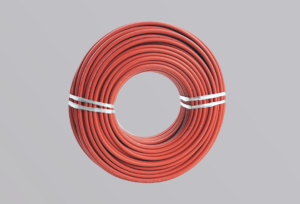
Viking axes are some of the most iconic weapons in history, known for their versatility, craftsmanship, and lethal efficiency. Used in both warfare and daily life, these axes were essential tools for the Norse people during the Viking Age (roughly 8th to 11th century). One of the reasons for their enduring legacy is the quality of materials used to forge them. Viking blacksmiths mastered the art of combining available resources with skilled craftsmanship, producing tools that were durable, sharp, and functional.
Let’s explore the different materials that were historically used to create Viking axes, from the iron and steel in their blades to the woods chosen for their handles.
- Iron
In the early Viking Age, iron was the primary material used for forging axes. Scandinavia was rich in bog iron, a type of iron ore found in wetlands. This raw material was extracted and smelted in primitive furnaces to produce usable iron, which blacksmiths then transformed into tools and weapons.
- Properties of Iron: Iron was relatively abundant and easy to work with at the time. It was softer than steel, which meant it didn’t hold a sharp edge for long periods, but it could be easily sharpened and repaired when needed. The forging process involved heating the iron in a furnace and hammering it into the desired shape.
- Use in Early Axes: Viking axes made from iron were simple but effective. They were strong enough to cut wood and serve as basic weapons in battle. These early axes were often single-bladed, with the design prioritizing utility over ornamentation.
- Steel
As Viking metallurgy advanced, steel became the preferred material for axe blades. Steel, which is a combination of iron and carbon, was harder and more durable than pure iron. This made steel axes more effective in combat, as they could hold a sharp edge for longer and withstand the stresses of battle.
- High-Carbon Steel: Some Viking axes were made from high-carbon steel, which contains a higher concentration of carbon. This type of steel was more difficult to produce but resulted in a blade that was sharper and more resilient. High-carbon steel gave Viking warriors an edge in battle, as their weapons could cut through armor and shields with greater ease.
- Pattern-Welded Steel: Viking blacksmiths sometimes employed a technique called pattern welding, which involved twisting and layering different types of steel and iron together. This created a strong, flexible blade with a distinctive, almost artistic pattern. Pattern-welded axes were not only functional but also symbols of craftsmanship and prestige.
- Steel-Edged Axes: In some cases, Viking blacksmiths would forge an iron axe but weld a thin layer of steel onto the cutting edge. This method allowed the smith to combine the durability and sharpness of steel with the more plentiful iron, making the axe more affordable while still retaining a sharp edge.
- Bronze (Decorative Use)
While not commonly used for the functional parts of Viking axes, bronze did occasionally make an appearance in decorative elements. Bronze, an alloy of copper and tin, was valued for its resistance to corrosion and its ability to be cast into intricate designs.
- Bronze Inlay: Wealthier Vikings or leaders might have bronze inlays added to their axes for decorative purposes. These inlays were typically used to adorn the axe’s handle or the blade with symbols, runes, or intricate patterns. Such ornamentation signified the owner’s status and personal wealth.
- Non-Combat Axes: Bronze could also be used in ceremonial or non-combat axes, which were more for display or rituals than actual battle. These axes might feature bronze details and were often passed down through generations as heirlooms.
- Wood for Axe Handles
The axe’s handle, or haft, was just as important as the blade itself. Viking blacksmiths needed to choose the right type of wood to ensure that the axe was strong, flexible, and capable of withstanding the stresses of chopping and combat.
- Ash Wood: One of the most popular materials for Viking axe handles was ash, known for its strength and shock-absorbing properties. Ash is both flexible and durable, making it ideal for a weapon that needed to withstand repeated blows without breaking.
- Oak Wood: Oak was another commonly used wood, favored for its toughness. Oak handles could endure heavy use in battle or while felling trees, though it was slightly heavier than ash. The additional weight could provide more force behind each strike.
- Yew Wood: Yew was occasionally used for axe handles as well. It was prized for its resilience and elasticity, although it was more commonly used for bows than axes. Nevertheless, yew handles would have been seen on some Viking axes due to the wood’s natural strength.
- Birch Wood: Birch was sometimes chosen for smaller hand axes or everyday tools. Though not as robust as ash or oak, birch was easier to work with and more abundant, making it a good choice for lighter, utility-based axes.
The handles were typically made long enough to allow for leverage and power in strikes, particularly for battle axes like the Dane axe, which featured elongated handles for increased range and force. The wood was often treated with oil to protect it from moisture and prevent cracking over time.
- Leather Wrapping and Binding
In some cases, Viking axe handles were wrapped in leather to provide a better grip, especially in wet or cold conditions. Leather binding also helped to absorb the shock of impact during combat or wood chopping.
- Functional Wrapping: Leather was often used to reinforce the handle near the base of the axe head, where the most stress was placed during use. This extra reinforcement reduced the risk of the handle splitting and provided the user with a better hold on the axe.
- Decorative Leatherwork: For higher-status Vikings, the leatherwork on their axes might include intricate patterns or knotwork, further showcasing their wealth and craftsmanship. These decorative touches added to the prestige of owning such a weapon.
- Bone or Antler Adornments
Some Viking axe for sale featured handles adorned with bone or antler, particularly in ceremonial or symbolic axes. These materials were often carved with intricate designs or runes, adding an additional layer of meaning and artistry to the weapon.
- Symbolism: Bone and antler were sometimes used to honor the gods or symbolize strength and endurance, qualities highly valued by the Vikings. For example, using the antler of a stag—a symbol of vitality and power—could impart symbolic strength to the weapon and its owner.
The Viking Axe: A Synthesis of Craftsmanship and Materials
The combination of iron, steel, and carefully chosen woods, often enhanced with decorative materials like bronze or leather, made Viking axes powerful and versatile tools. Viking blacksmiths had a deep understanding of how to work with these materials, allowing them to create weapons that were both functional and visually striking. This mastery of materials and technique is why Viking axes have endured as symbols of Norse strength, resilience, and artistry.
Whether used in battle or for daily tasks, Viking axes were more than just tools—they were a testament to the resourcefulness and skill of the people who made and wielded them. Today, these axes continue to captivate collectors, historians, and modern craftsmen, who are drawn to the history and craftsmanship embedded in every forged blade and carved handle.






